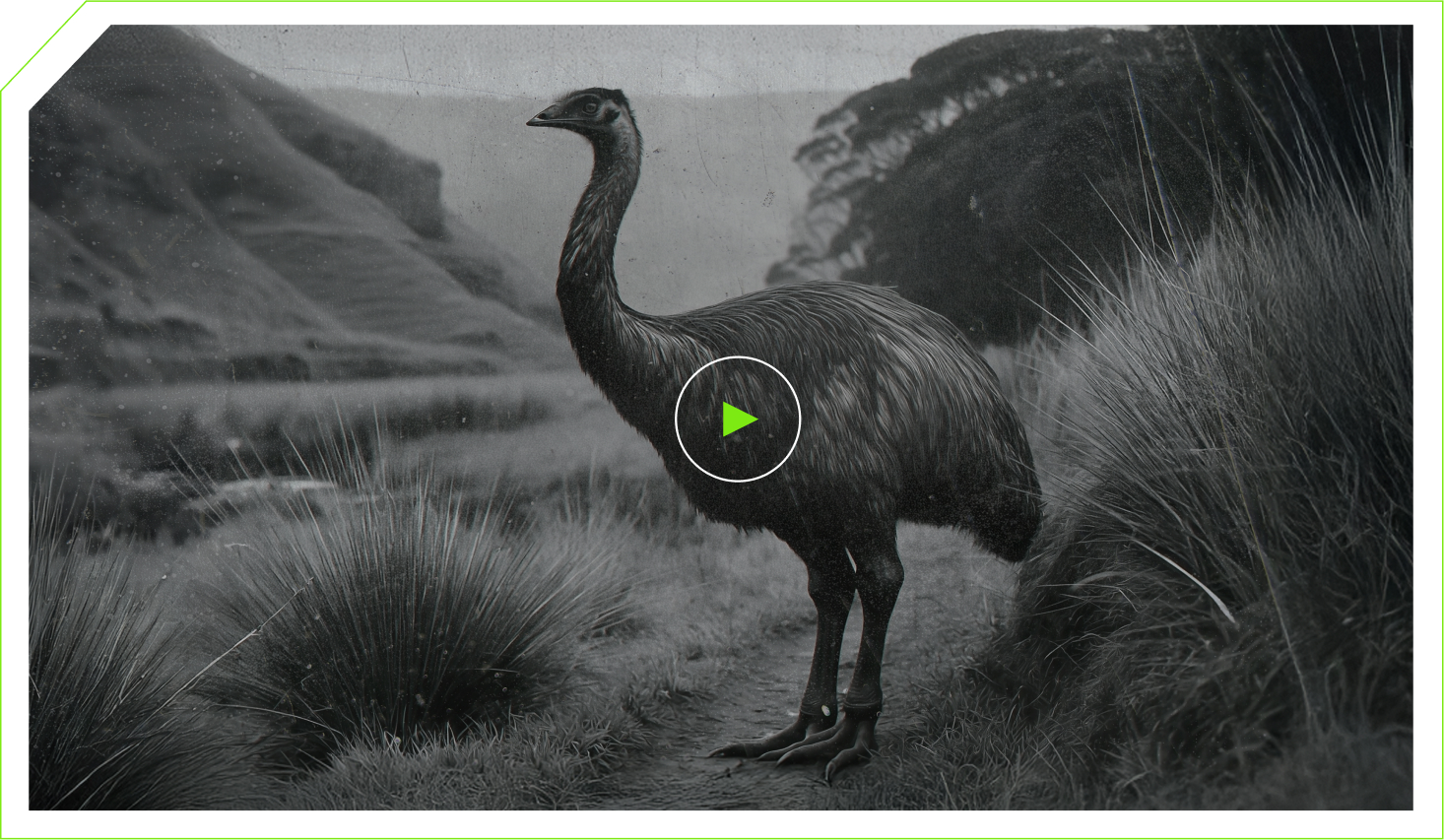Always be finding new species to say you’re going to de-extinct.
A species of huge, flightless bird that once inhabited New Zealand disappeared around 600 years ago, shortly after human settlers first arrived on the country’s two main islands. Now, a Texas-based biotech company says it has a plan to bring it back.
Genetic engineering startup Colossal Biosciences has added the South Island giant moa — a powerful, long-necked species that stood 10 feet (3 meters) tall and may have kicked in self-defense — to a fast-expanding list of animals it wants to resurrect by genetically modifying their closest living relatives.
The company stirred widespread excitement, as well as controversy, when it announced the birth of what it described as three dire wolf pups in April. Colossal scientists said they had resurrected the canine predator last seen 10,000 years ago by using ancient DNA, cloning and gene-editing technology to alter the genetic make-up of the gray wolf, in a process the company calls de-extinction. Similar efforts to bring back the woolly mammoth, the dodo and the thylacine, better known as the Tasmanian tiger, are also underway.
To restore the moa, Colossal Biosciences announced Tuesday it would collaborate with New Zealand’s Ngāi Tahu Research Centre, an institution based at the University of Canterbury in Christchurch, New Zealand, that was founded to support the Ngāi Tahu, the main Māori tribe of the southern region of New Zealand.
The project would initially involve recovering and analyzing ancient DNA from nine moa species to understand how the giant moa (Dinornis robustus) differed from living and extinct relatives in order to decode its unique genetic makeup, according to a company statement.
“There is so much knowledge that will be unlocked and shared on the journey to bring back the iconic moa,” Ben Lamm, CEO and co-founder of Colossal Biosciences, said in the statement. For example, the company said, researching the genomes of all moa species would be “valuable for informing conservation efforts and understanding the role of climate change and human activity in biodiversity loss.”
Colossal, which has raised at least $435 million since it was founded by Lamm and Harvard University geneticist George Church in 2021, has committed “a large investment” to New Zealand, the company said without giving further details. Peter Jackson, the New Zealand-born “Lord of the Rings” director, who is one of a number of high-profile investors in the company, is also involved with the project. He has one of the largest private collections of moa bones, according to the Associated Press.
Scott MacDougall-Shackleton, cofounder and director of the Advanced Facility for Avian Research at Western University in London, Ontario, said that because the moa went extinct in the past few hundred years there were extensive bones, egg shell fragments, and even feathers that could be studied. He was not involved in the research.
“The primary explanation for their extinction is overhunting and habitat change following the arrival of Polynesian peoples to the island,” he explained via email.
“Prior to this they had very few predators,” he said. “This is a pattern for flightless birds on islands that have very little defence against hunting or predation (like dodos).”
The idea of reviving a species like this was “intellectually interesting, but really should be a low priority,” MacDougall-Shackleton said. “If we are concerned about island bird conservation there are hundreds of threatened and critically endangered species in New Zealand, Hawaii and other Pacific islands that need conservation resources more urgently.”
See here for the previous entry. As this AP story notes, filmmaker Peter Jackson, who has a large collection of moa bones, is involved. I don’t know if that makes you more or less excited about this prospect, but there you have it anyway. The proof as always will be in seeing one of these critters actually walk around. Here’s Colossal’s page on the moa, where I got that image, if you want to know more.


Very interesting, cloning any kind of bird… because they grow from large eggs, which aren’t as easily manipulated as mammalian egg cells & embryos.
(Double-checking…)
Nope, no birds have ever been cloned. Even if one can reconstruct a moa genome — and Colossal hasn’t done that for any species without frozen living tissue samples, their pseudo dire wolves notwithstanding — putting that into a viable egg is another whole moon-shot project.
https://www.audubon.org/news/the-surprising-reason-scientists-havent-been-able-clone-bird-yet
Paul, your referenced Audubon article is from early 2021. If Isla Nublar has taught us anything, it’s that anything is possible (with CRISPR, etc).